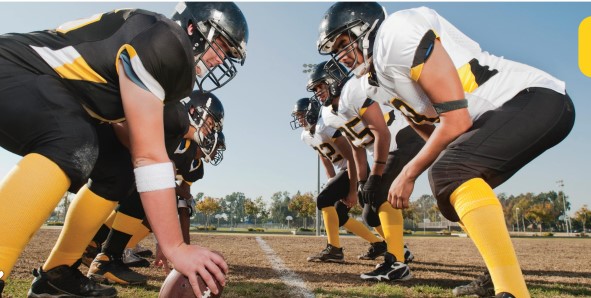What Everyone Needs to Know About These Common Traumatic Brain Injuries
Concussions can happen anytime and anywhere. They become especially concerning in autumn when school sports programs increase the potential for blows to the head, says Kyrsten Hayworth, MS, ATC, an athletic trainer at Community Medical Center (CMC).
“Concussions can also occur when small children tumble off of playground equipment, older adults fall or workers are struck by something at the workplace,” Hayworth says. “It’s important for everyone to know the basics about concussions, their symptoms and management."
Hayworth is leading a new program at CMC that begins this fall and provides resources, testing and care for concussions as well as help in preventing these sometimes-misunderstood brain injuries. Here, she explains what you need to know.
What is a concussion?
A concussion is a traumatic brain injury usually caused by a blow to the head. The brain floats inside the skull in a fluid that provides a cushion to the brain and spinal cord during normal activity and movement. But if the brain suddenly lurches in a certain direction, as can happen with a blow to the head, the brain can hit the skull. That can disrupt normal neurologic function and trigger temporary cognitive symptoms such as headache, nausea and dizziness, along with other signs and symptoms that people may be less aware of.
When do concussions tend to happen?
Some of the highest risks occur in contact sports such as football, ice hockey, soccer, field hockey and lacrosse. But concussions also can happen in noncontact sports like baseball or cheerleading in which participants may be hit by equipment such as a ball or get thrown into the air and dropped or not caught properly.
In workplaces such as construction sites or warehouses, people may fall or have items like equipment or boxes drop on them. Any situation where there’s some kind of forceful impact to the head can produce a concussion.
What signs and symptoms tend to be surprising or less familiar?
You could have a concussion and not know. Symptoms often show up right away, but they also can show up days later.
If you think someone might have a concussion, ask how they—or you—are feeling. In addition to headache, nausea, vomiting and dizziness, a person might just feel tired. Sometimes people get ringing in their ears or have sensitivity to noise and light. You could feel sad, anxious or irritable. Or you could have a feeling of just being off—like something is different but you don’t know how to put it into words
There might be a difference between what you feel and what others notice. For example, others might notice cognitive symptoms like memory loss or not paying attention in school that the person with a concussion might miss.
What are some misconceptions about concussions?
Sometimes people think, “Well, they didn’t lose consciousness, so they don’t have a concussion.” You don’t have to lose consciousness to have a concussion.
And there’s still a misperception that a blow to the head is “just a ding.” It’s not like that anymore—or shouldn’t be. Most contact sports now have athletic trainers on hand who know what to look for. And it’s important to realize that concussions can just as readily happen during practice as at games.
If you don’t treat a concussion, what’s the harm?
If you get hit on the head again, symptoms can last a lot longer. You can get post-concussion syndrome, which is like a concussion on top of a concussion. And the brain is more sensitive to injury after a first blow, so it takes less to cause another concussion.
With post-concussion syndrome, symptoms can go on for months. But if you address a concussion immediately, symptoms might resolve in a couple of weeks. That’s why teams and businesses need to go through concussion protocols.
How can a concussion be managed?
An athlete suspected of having a concussion should automatically be taken out of the sport and sent to a physician. An athletic trainer should track the player’s signs and symptoms and, in conjunction with a physician, create a return-to-play plan.
Steps might be: First be symptom- free, then back at school or work with no issues, then able to do light aerobic activity like walking. If you continue to have no signs or symptoms, take on increasing amounts of activity. Next steps might be full practice but no contact, then practice with full contact. If no symptoms come back and no new ones start, you can go back to sports with no issues.
Can anything be done to prevent concussions?
Coaches should receive concussion training and talk about concussion with players, including teaching proper technique for practice and games, and addressing acceptable levels of aggression on the field. Equipment should be safe and in good condition. And teams should check fields for hazards that might cause falls or injury.
Companies should address unsafe environments where something could fall or cause someone to trip. Employees should be aware of their surroundings in places where a lot of things are moving around them.
Most concussions can resolve, so it’s important to take all the right steps to heal the brain and restore normal function.
| Coaches should recieve concussion training and talk about concussion with players, including teaching proper technique for practice and games, and addressing acceptable levels of aggression on the field. |
Learn more about concussion treatment from Community Medical Center, an RWJBarnabas Health facility.
